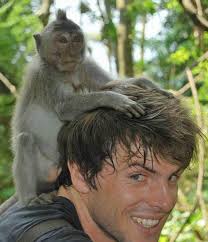Nicolas Perony: Puppies! Now that I’ve got your attention, complexity theory
TED Talk Video: Animal behavior isn’t complicated, but it is complex. Nicolas Perony studies how individual animals — be they Scottish Terriers, bats or meerkats — follow simple rules that, collectively, create larger patterns of behavior. And how this complexity born of simplicity can help them adapt to new circumstances, as they arise.
Nicolas Perony models the movement of animal groups to understand: what is the individual behavior that guides the behavior of the larger society?
Why you should listen to him:
Nicolas Perony started his career as a roboticist. But after one of his robots — which was designed to follow a white line — destroyed itself because of a lighting snafu on demo day, he realized that he was less interested in creating complicated robots and more interested in studying the complexity that already exists out there in the animal kingdom. He quickly changed course and is now a quantitative scientist at the Chair of Systems Design at ETH Zurich, where he studies the structure and dynamics of animal societies.
Perony conducts his research by placing GPS collars on animals like Bechstein’s bats and meerkats, and studying the spacial data of the group. He creates models of the movement over time to see patterns. He then tries to ascertain at the simple rules that individuals in the animal group seem to be following that, when done en masse, result in the larger flow. In other words, he looks at the underlying mechanics that lead to the collective movement of animal groups.
[ted id=1916]
Video Source: http://www.ted.com/talks/nicolas_perony_puppies_now_that_i_ve_got_your_attention_complexity_theory.html










